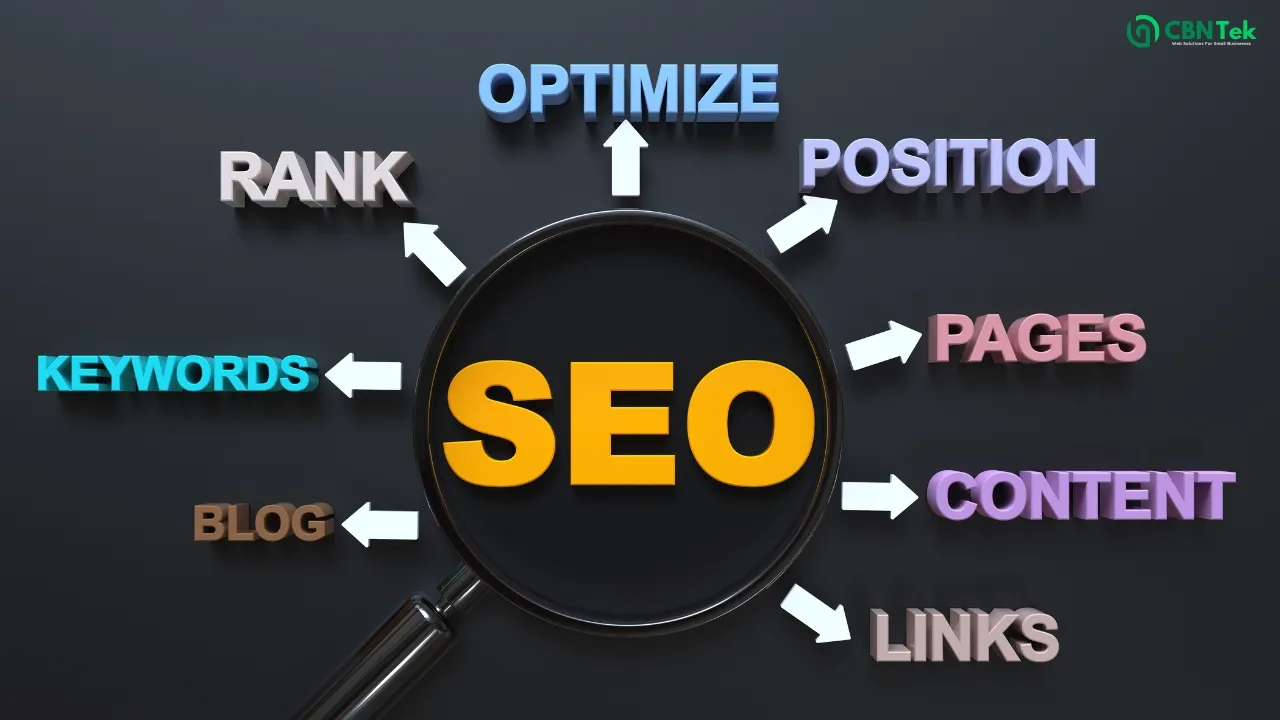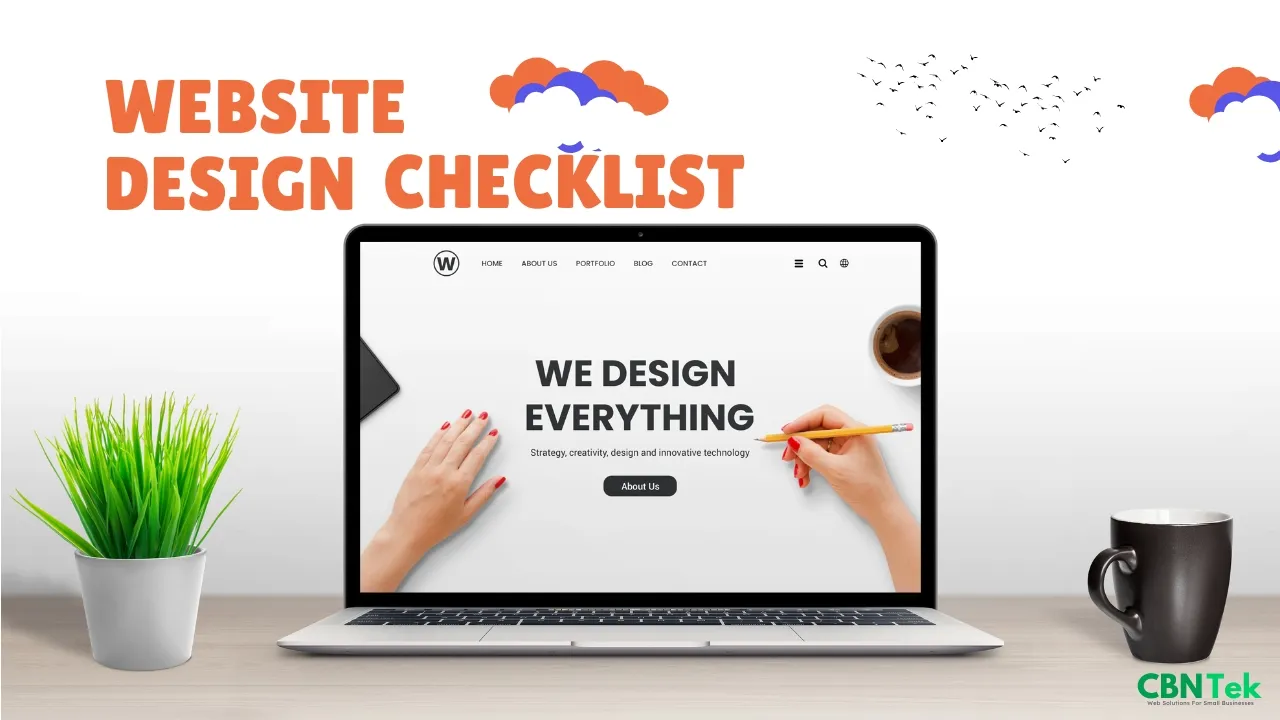How to Create and Optimize a WordPress Website (Beginner Friendly + SEO Tips)
Thinking about building a website? You’re in the right place! Whether you’re 13 or 60, this easy-to-follow guide will help you create a WordPress website from scratch and make sure it gets found on Google.
We’ll walk you through each step from picking a domain to designing your site, adding content, and optimizing it for SEO. By the end, you’ll have a fully functional, search-friendly WordPress website that looks great and performs even better.
1. Pick a Domain Name and Web Hosting

Your domain is your website’s address on the internet (like yourwebsite.com), and your host is where all your site files live.
The first step in creating a WordPress website design is to choose a domain name and a reliable hosting provider. Choose a domain name that reflects your website’s content and is simple to recall. Once you have selected a domain, you will need to find a hosting provider that offers WordPress hosting. Compare different hosting options based on factors like pricing, performance, and customer support.
Choosing a Domain Name:
- Ensure it’s brief and easy to recall.
- Use keywords related to your niche (e.g., travelgearhub.com for a travel site)
- Avoid numbers and special characters
Choosing a Hosting Provider:
Pick a reliable hosting company that offers good speed, security, and WordPress support. Here are some top options for 2025:
- Bluehost (great for beginners, free domain included)
- SiteGround (fast and secure)
- Hostinger (affordable pricing)
- Kinsta and WP Engine – top-tier managed hosting solutions for premium performance and support.
Most hosting companies provide a convenient one-click WordPress installation option, making setup fast and hassle-free.
2. Install WordPress
After you have purchased a domain and hosting, the next step is to install WordPress. Most hosting companies provide a convenient one-click WordPress installation option, making setup fast and hassle-free. Alternatively, you can manually install WordPress by downloading the latest version from the official website and following the installation instructions.
Two Options:
- One-Click Install – Many hosts like Bluehost and Hostinger offer a one-click WordPress install in your dashboard.
- Manual Install – Download WordPress from wordpress.org, upload it to your hosting account, and follow the steps. (This is optional and takes a bit more time.)
After the installation is complete, access your WordPress dashboard by navigating to https://yourwebsite.com/wp-admin.
3. Choose a WordPress Theme
A theme determines the overall design and layout of your WordPress website. You’ll find countless free and paid themes designed to suit different niches and website goals.
Choose a theme that aligns with your website’s goals, is visually appealing, and offers customization options. You can preview and install themes directly from the WordPress dashboard. Additionally, consider using a responsive theme that adapts to different screen sizes for optimal user experience.
Where to Find Themes:
- WordPress Theme Directory (free)
- ThemeForest (premium)
- Astra, Kadence, and GeneratePress (lightweight and SEO-friendly)
What to Look For:
- Mobile-friendly (responsive design)
- Fast loading speed
- Customizable layout and fonts
- SEO-optimized code
You can change your theme any time, but it’s good to pick one you love from the start.
To add a new theme, head over to Appearance in your dashboard, select ‘Themes,’ then click on ‘Add New.
4. Customize Your Website

Once you have selected a theme, it’s time to customize your website to reflect your brand and style. WordPress provides a user-friendly interface for customizing your website’s appearance and functionality.
You can customize elements such as the site title, logo, colors, fonts, and menus. Additionally, explore the theme’s options for further customization. Try out various layout options and settings until you find the design that best matches your vision.
Now let’s make your site your own.
Go to Appearance > Customize in your dashboard and explore the options:
- Upload your logo
- Change fonts and colors
- Edit your site title and tagline
- Create menus and navigation
For extra design power, consider using a page builder like:
- Elementor (free and premium)
- Beaver Builder
- Divi (premium)
These let you drag and drop elements without needing to code.
5. Install Essential Plugins
Plugins are handy add-ons that enhance what your WordPress website can do. There are thousands of plugins available, offering features for SEO, security, performance optimization, contact forms, social media integration, and more.
Install essential plugins for optimizing your website’s SEO, spam protection, caching to improved performance and more. Be cautious not to install too many plugins, as it can affect your website’s speed and security.
Must-Have Plugins in 2025:
- Rank Math or Yoast SEO – These tools assist in fine-tuning your content to improve its visibility on search engines.
- WPForms – Easy-to-use contact form builder
- UpdraftPlus – Backup your site automatically
- Wordfence Security – Secures and protect your site from hackers
- LiteSpeed Cache or W3 Total Cache – Speed up your site
- Smush – Helps reduce image file sizes to boost your website’s loading speed.
To install plugins, navigate to the Plugins section in your dashboard, click on ‘Add New,’ and use the search bar to find the plugin by name.
6. Create High-Quality Content
Content is the backbone of any successful website. Craft valuable, engaging content that resonates with your audience and meets their needs. Use a combination of text, images, and videos to make your content visually appealing and easy to consume by its’ readers.
Strategically adding relevant keywords throughout your content will improve SEO. Regularly update your website with fresh content to keep visitors engaged and encourage them to return which also helps you rank high in search engines.
Start With These Pages:
- Home
- About Us
- Services or Products
- Contact
- Blog
Tips for Writing Great Content:
- Use clear headlines and bullet points
- Break long paragraphs into short ones
- Include images and videos
- Add keywords naturally (not too many)
- Speak directly to your readers
Focus on being helpful, genuine, and transparent rather than aiming for perfection.
7. Optimize Your Site for SEO
Enhancing your WordPress site for search engines is essential to boost its visibility and drive organic traffic. Basically, search engine optimization (SEO) helps people find your website on Google, Bing etc.
Here are several essential SEO strategies to apply:
Here’s how to do it:
- Keyword Research: Find terms your audience is searching for, then naturally weave them into your content. Tools like Ubersuggest or Google Keyword Planner can make this process easier.
- Optimize Titles & Meta Descriptions: Enhance your meta titles and descriptions to boost click-through rates in search results. Tools like Rank Math or Yoast simplify this process.
- Clean URLs: Create concise, informative, and keyword-optimized URLs for your site’s pages and posts. e.g https://yoursite.com/seo-tips
- Image Optimization: Compress and optimize images to reduce page load times and include relevant alt text for accessibility.
- Internal and External Linking: Connect to relevant internal blog posts and pages, as well as credible external sources, to boost your website’s authority online.
- Mobile Responsiveness: Make sure your website adapts smoothly and delivers a consistent experience across all devices.. Meaning, make sure your site works on desktop, phones and tablets
- Fast Load Times: Optimize your website’s performance by minimizing code, using caching, and images optimizing tools.
- Sitemap & Robots.txt: Create a sitemap to help search engines crawl and index your website, and use a robots.txt file to control which pages are accessible to search engines. Yoast or Rank Math handle this process automatically.
Remember, SEO is a long game. Regularly refresh your content and make continuous improvements.
8. Set Up Analytics and Tracking

You can’t improve what you don’t measure. Tracking the performance of your website is essential for understanding your audience and making data-driven decisions.
kSet up Google Analytics or other tracking tools to monitor key metrics such as website traffic, user behavior, and conversion rates. Analyze the data regularly to identify areas for improvement and optimize your website accordingly.
Tools to Use:
- Google Analytics – See who visits your site and what they do
- Google Search Console – Monitor how your site performs in search results
- MonsterInsights – Simplify the connection of your website to Google Analytics.
Track things like:
- Number of visitors
- Most popular pages
- Where your traffic comes from
- Click-through rates
This data helps you make better decisions and grow your site.
9. Secure Your WordPress Website

Hackers target websites of all sizes. So, a good website security is crucial for protecting your data and maintaining the trust of your visitors. Implement security measures is crucial and goes a long way.
Additionally, consider using SSL encryption to secure data transmission between your website and visitors.
Top Security Measures & Tips:
- Use strong passwords and avoid “admin” as a username
- Add a security plugin such as Wordfence or Sucuri to protect your site.
- Update WordPress, themes, and plugins regularly
- Enable two-factor authentication (2FA)
- Install an SSL certificate (this makes your site HTTPS)
Many web hosts today bundle free SSL certificates with their hosting plans at no extra cost.
10. Keep Your Site Updated and Maintained
A healthy website is an updated website. Keeping your WordPress website in top shape requires continuous attention. Regularly update WordPress, themes, and plugins to ensure compatibility, security, and access to new features.
Ensure you back up your website frequently to safeguard against potential data loss. Monitor your website for broken links, outdated content, and other issues that may affect user experience.
Maintenance Checklist:
- Update WordPress, plugins, and themes weekly
- Backup your site regularly (UpdraftPlus helps)
- Delete unused plugins and themes
- Evaluate your website’s performance across both mobile and desktop platforms to ensure a smooth user experience.
- Detect and fix broken links on your website using a tool such as Broken Link Checker.
- Refresh outdated content with new information
Make time for a quick site checkup at least once a month.
Final Thoughts
That’s it! 🎉 You now know how to create a professional WordPress website and optimize it for SEO.
With the right domain, hosting, theme, and plugins plus engaging content and strong SEO your website can attract visitors, gain trust, and help you reach your goals.
Keep learning, stay consistent, and don’t be afraid to experiment.
Your website is your digital home. Make it welcoming, secure, and full of value. 💻
FAQs – WordPress Website Design Guide
Can I build a WordPress site for free?
Yes! WordPress software is free. You’ll need to pay for hosting and a domain, but you can start with budget-friendly options under $50/year.
What’s the time frame for designing a website?
Building a simple website can take just a few hours, while creating a fully customized site with detailed content and features might take several days, depending on the level of design and functionality you need.
Do I need to know how to code?
Nope! WordPress is beginner-friendly, and with page builders like Elementor, you don’t need to touch any code.
What’s better: WordPress.com or WordPress.org?
WordPress.org (self-hosted) is better for most people. You get full control, customizations, and no platform limits.
How do I drive traffic to my new site?
Use SEO, post on social media, join communities, and create helpful blog content that people want to share.
Want help setting up your WordPress website? Contact us.

























0 Comments